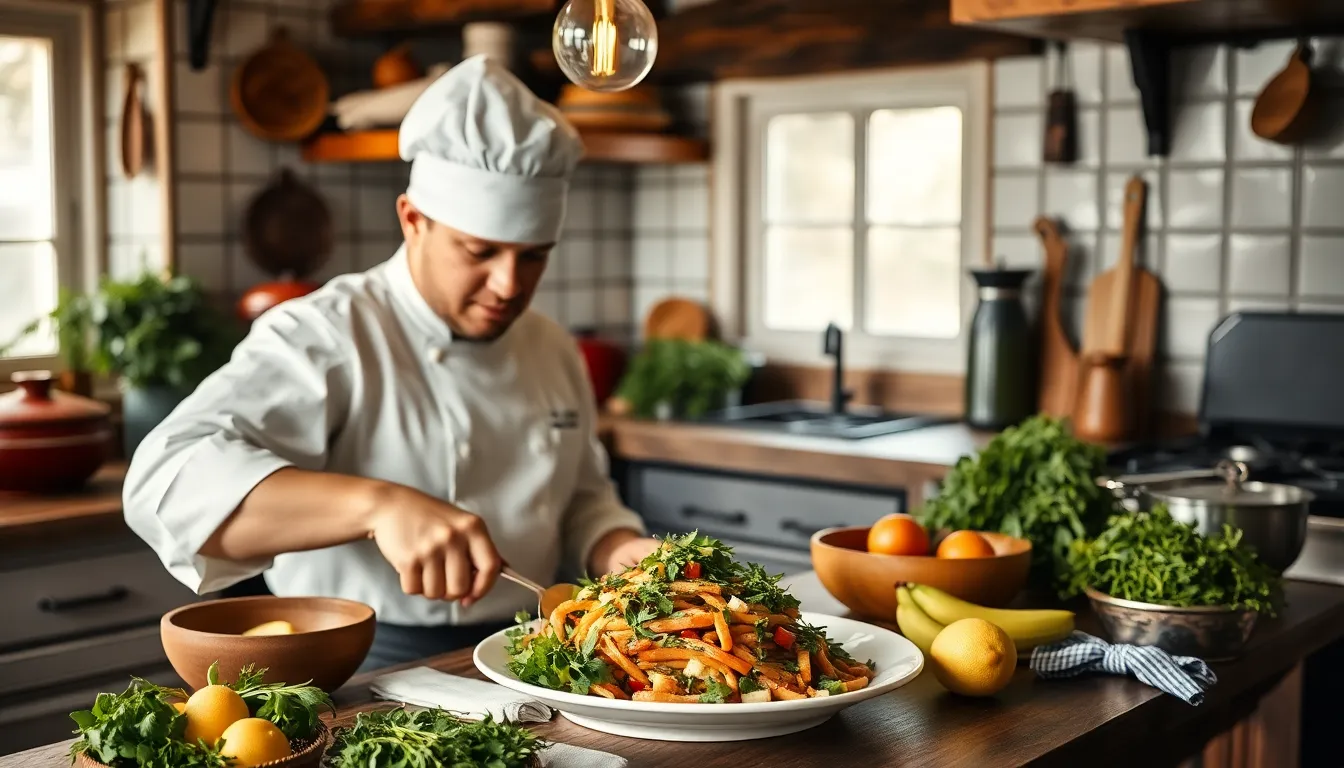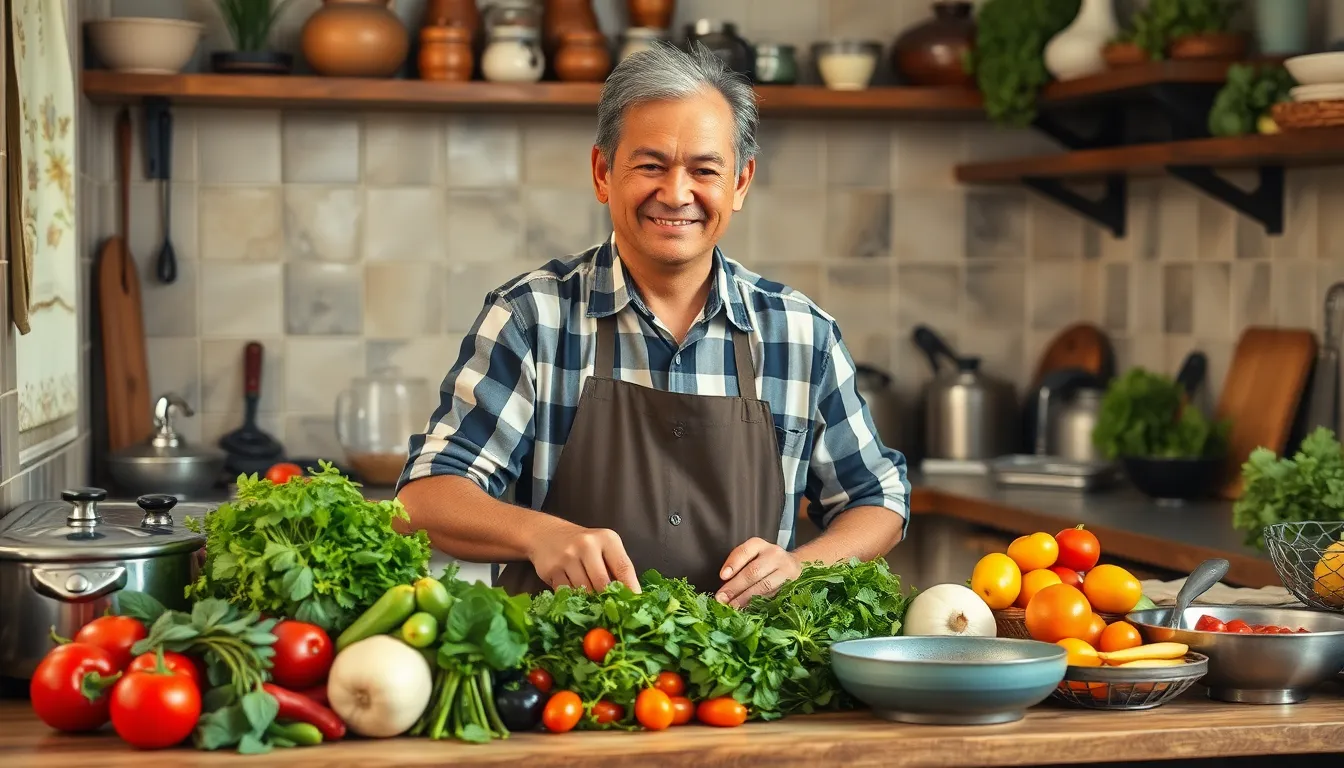When it comes to cooking at home, the question on everyone’s lips is: can Bigussani whip up a culinary masterpiece or is it all just smoke and mirrors? Picture this: a kitchen filled with the aroma of spices, sizzling pans, and the occasional smoke alarm blaring in the background. It’s a scene that could either lead to a delicious feast or a hilarious disaster.
Can Bigussani Cook at Home
Exploring the culinary capabilities of Bigussani reveals a blend of tradition and creativity. This intriguing figure holds a unique place in the kitchen.Origin and Background
Bigussani traces its roots to a rich culinary heritage. Originating in regions known for their vibrant food cultures, dishes passed down through generations feature prominently. Often associated with diverse ingredients, Bigussani embraces a variety of cooking techniques. Historical influences shape its evolution, reflecting regional flavors and cooking methods. As a result, audiences find that it embodies a fusion of tastes and styles.Cultural Significance
Culturally, Bigussani plays a vital role in communal gatherings and celebrations. Many view it as a symbol of hospitality, bringing people together. Traditional recipes often serve as a medium for storytelling and sharing experiences. In various cultures, it represents not just sustenance but also a connection to heritage. Collectively, communities celebrate Bigussani as an integral part of their culinary identity.Cooking Skills of Bigussani

Traditional Cooking Methods
Bigussani employs traditional cooking methods that showcase flavors passed down through generations. Techniques like slow roasting, simmering, and fermenting represent age-old practices that enhance the taste and texture of meals. Knowledge of local ingredients plays a crucial role in crafting authentic dishes. Familiarity with spices and herbs elevates the cooking process, adding depth and complexity to every dish. Community gatherings often highlight these time-honored methods, ensuring that recipes continue to flourish and evolve.Modern Adaptations
In addition to traditional techniques, Bigussani embraces modern adaptations that resonate with contemporary tastes. Incorporating new culinary trends allows for exciting interpretations of classic dishes. Fusion cooking emerges as a significant element, combining diverse cuisines to create unique flavors. Emphasis on healthy cooking reflects a growing awareness of nutrition and sustainability. Use of innovative tools and appliances reflects modern culinary advancements, enabling efficient meal preparation and presentation. Engaging with seasonal produce ensures that Bigussani’s dishes remain fresh and relevant.Equipment and Ingredients
Bigussani’s culinary prowess depends on the right equipment and a diverse set of ingredients. Various tools make the cooking process efficient and enjoyable.Essential Cooking Tools
Essential cooking tools include sharp knives, cutting boards, and pots of different sizes. A sturdy skillet facilitates searing and sautéing, while a slow cooker allows for flavorful braising. Measuring cups and spoons ensure precise ingredient quantities, promoting consistent results. Food processors simplify chopping, blending, and mixing tasks, accommodating both simple and complex recipes. Tongs contribute to safe handling of hot foods, enhancing cooking techniques. These tools form the backbone of a well-equipped kitchen, enabling Bigussani to create dishes with ease and confidence.Common Ingredients Used
Common ingredients highlight the rich flavors associated with Bigussani’s dishes. Fresh vegetables like tomatoes, peppers, and onions provide essential base flavors. Aromatic herbs—such as basil, cilantro, and parsley—elevate the taste profile, delivering aromatic depth. Many recipes incorporate grains like rice, barley, or quinoa, offering versatile foundations. Spices like cumin, paprika, and turmeric contribute warmth and complexity, making each dish unique. Proteins, including chicken, lentils, and fish, play a crucial role by adding heartiness. These ingredients work together to showcase the vibrant, authentic essence of Bigussani’s culinary tradition.Home Cooking Tips for Bigussani
Mastering home cooking as Bigussani involves practical strategies and creativity. Effective time management enhances the cooking experience and delivers delicious results.Time Management
Allocating time wisely transforms a chaotic cooking session into a smooth operation. Prioritize tasks, beginning with ingredients that require longer cook times. As dishes simmer, start on quick preparations like chopping fresh herbs and vegetables. Each meal can benefit from being planned, leading to minimized stress. Using timers helps track cooking stages, ensuring nothing burns or overcooks. Staging ingredients beforehand simplifies the process, allowing for a seamless transition between tasks. Keeping the kitchen organized contributes to better focus and efficiency throughout the meal preparation.Recipe Suggestions
Exploring diverse recipes enhances the culinary journey of Bigussani. Consider traditional dishes like slow-roasted meats that embody rich flavors. Fresh vegetable salads paired with tangy dressings create light and vibrant meals. Aromatic stews featuring lentils or beans offer both heartiness and cultural significance. Emphasizing seasonal produce ensures that every dish bursts with freshness. Incorporating innovative twists, such as fusion flavors, can elevate classic recipes. For dessert, simple fruit compotes provide a sweet finish, showcasing local ingredients and enhancing the dining experience. These suggestions reflect a blend of tradition and contemporary appeal.
Aromatic stews featuring lentils or beans offer both heartiness and cultural significance. Emphasizing seasonal produce ensures that every dish bursts with freshness. Incorporating innovative twists, such as fusion flavors, can elevate classic recipes. For dessert, simple fruit compotes provide a sweet finish, showcasing local ingredients and enhancing the dining experience. These suggestions reflect a blend of tradition and contemporary appeal.
